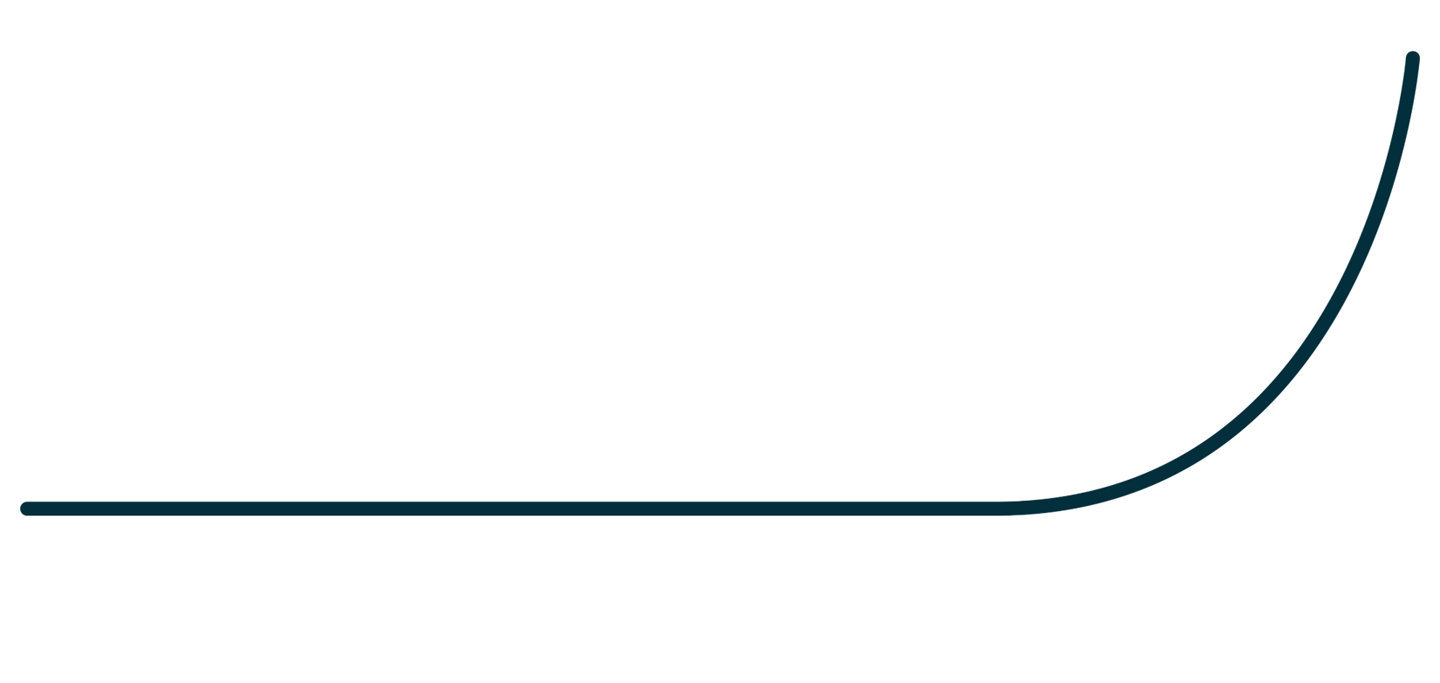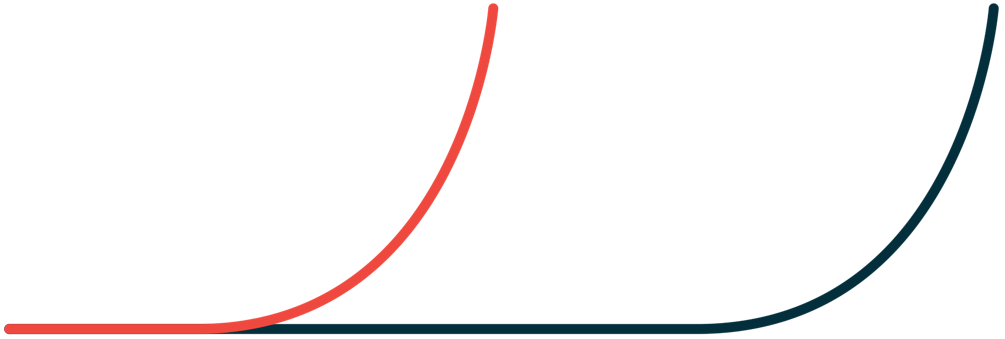Preface
Eight years ago, my then-boss asked our team of three analysts to try using a “new” tool called Tableau. All three of us did the first thing that came naturally and attempted to replicate our existing Excel reports in Tableau. I found that transitioning from Excel-based reporting was not always seamless, but have since realized that it was because I did not have a go-to resource to help me connect the dots between my existing reporting knowledge and what I was learning in Tableau. I’m grateful I stuck with Tableau because over time I realized how flexible and powerful the software is.
As of 2018, Tableau has been named a leader in the Gartner Magic Quadrant for Business Intelligence and Analytics Platforms for six consecutive years. Tableau works because it helps you unlock the benefits of visualizing data:
-
Reduced time to insight
-
Increased accuracy of insights
-
Improved engagement
Tableau has made it possible for me to find thousands of insights in data that have led to tangible actions and real returns for the dozens of globally known brands I have consulted for. In addition to the value added during my day job, I have had the honor of being named a Tableau Zen Master twice, won Tableau’s Iron Viz Championship in 2013, and authored the Tableau Public Visualization of the Year in 2015.
The data visualization tips, tutorials, and strategies contained in this book are the 100 ideas that made this all possible.
This Book’s Purpose
When I started using Tableau, there weren’t many resources available for learning the tool. There were (and still are) a lot of individual posts and videos on the web, but I found it challenging to tie everything together in a way that helped me get the most out of Tableau. I have an MBA and a master’s in sport business management, as well as undergraduate degrees in marketing and psychology. Before I began my career, I had not taken a single class about data or analytics. This made it even more challenging to get started with Tableau, and despite all of my previous accomplishments, I would say that my learning curve looked like this:

The long, flat line before I started to figure things out represents about two years of self-teaching and growing pains. In many ways, this experience makes me uniquely qualified to help you reduce your own learning curve. I wrote this book because it’s the one I wish I had when I started using Tableau. My hope is that this selection of topics, combined with my firsthand knowledge of potential pitfalls, and the practical style of communication, will make your learning curve look like this:

This Book’s Audience
This book is best for a “201-level” Tableau user. Most Tableau users have some foundational “101-level” knowledge, but do not have the need for extremely technical “601-level” skills. After all, Tableau’s mission is to help you see and understand your data as easily as possible. This book is targeted specifically at helping you build on the foundational knowledge and take your applications of Tableau to the next level. That being said, I have two big caveats:
-
Part I covers the core concepts that I find most important when using Tableau. The chapters in that part make it possible for a brand-new Tableau user to learn how to use Tableau with this book alone. For more experienced users, it also offers a review of basic concepts to ensure they have the prerequisites required to build on their knowledge in later chapters.
-
Beyond technical “how-tos,” this book also offers a strategic framework for data visualization and discusses storytelling techniques. Furthermore, many of the tips and tricks in Practical Tableau were invented by me personally, and may be considered advanced. It is my belief that there is something for every Tableau user in this book, regardless of experience level.
This Book’s Structure
Practical Tableau is organized into five parts:
- Part I
-
The chapters in this part help you get started from scratch using Tableau. By the end of Part I, you will have the ability to use Tableau immediately and the foundational prerequisites to apply the “201-level” material.
- Part II
-
Part II consists of step-by-step tutorials that walk you through how to build a variety of charts in Tableau. More importantly, each tutorial also explains uses for each chart type in a business context, which helps you choose the right tool for the job in your analyses. Many of the chart types explained here are not available “out-of-the-box” through Tableau’s “Show Me” functionality, so you are sure to add some advanced approaches to your Tableau toolbelt. For the charts that are easy to create with Show Me, there are often innovative twists added to take the standard charts to the next level.
- Part III
-
The various topics covered in this part will help ensure you’re known as the Tableau guru at your office. This part covers everything from innovative uses of parameters, working with dates, color theory, making your Tableau workbooks run efficiently, designing for mobile devices, and much more.
- Part IV
-
These chapters discuss the INSIGHT framework for data visualization. The INSIGHT framework is a proprietary process that has been used in the construction of hundreds of Tableau dashboards. Following a strategic framework helps you align the requirements of diverse end users to maximize the effectiveness of your data visualization.
- Part V
-
The book concludes by outlining tangible tactics for storytelling with data. Regardless of how good you become at the technical aspects of Tableau, without some attention to the intangible aspects of data visualization, you will not be as successful as you can be. This part discusses data visualization theory and the psychological components of communicating with data. You will learn specific and actionable tips that you can begin implementing in your work immediately.
O’Reilly Safari
Note
Safari (formerly Safari Books Online) is a membership-based training and reference platform for enterprise, government, educators, and individuals.
Members have access to thousands of books, training videos, Learning Paths, interactive tutorials, and curated playlists from over 250 publishers, including O’Reilly Media, Harvard Business Review, Prentice Hall Professional, Addison-Wesley Professional, Microsoft Press, Sams, Que, Peachpit Press, Adobe, Focal Press, Cisco Press, John Wiley & Sons, Syngress, Morgan Kaufmann, IBM Redbooks, Packt, Adobe Press, FT Press, Apress, Manning, New Riders, McGraw-Hill, Jones & Bartlett, and Course Technology, among others.
For more information, please visit http://oreilly.com/safari.
How to Contact Us
Please address comments and questions concerning this book to the publisher:
- O’Reilly Media, Inc.
- 1005 Gravenstein Highway North
- Sebastopol, CA 95472
- 800-998-9938 (in the United States or Canada)
- 707-829-0515 (international or local)
- 707-829-0104 (fax)
We have a web page for this book, where we list errata, examples, and any additional information. You can access this page at http://bit.ly/practical-tableau.
To comment or ask technical questions about this book, send email to bookquestions@oreilly.com.
For more information about our books, courses, conferences, and news, see our website at http://www.oreilly.com.
Find us on Facebook: http://facebook.com/oreilly
Follow us on Twitter: http://twitter.com/oreillymedia
Watch us on YouTube: http://www.youtube.com/oreillymedia
Acknowledgments
No one achieves anything remarkable in a community without the support of that community, and I am certainly no exception to that rule. What I have found most unique about my experience with Tableau is its relentlessly kind and selfless community. I would not have been able to write this book without the knowledge shared and the inspiration provided by Tableau’s user community. While some of these users are mentioned throughout the chapters of Practical Tableau, there are far too many individuals to name that have helped me along the way. If you have answered somebody’s question on Tableau’s user forums, posted a visualization to Tableau Public, attended a user group meeting, or wrote a blog post about Tableau: thank you.
Thank you, Ben Jones, Director of Outreach Programs at Tableau. Ben inspired me very early in my career and gave me the confidence to push the Tableau envelope. Quite simply, I would not have had the opportunity to write this without Ben Jones and Tableau Public.
Thank you to my family for helping me develop a worldview that motivated me to do something like this and for your support along the way; even if at times I had trouble explaining exactly what I do.
Special thanks to my wife, Amy, for allowing me to share some of our private life through data visualization and letting me disappear to the coffee shop almost every Saturday and Sunday for quite a while to document the ideas you’re about to read.
Get Practical Tableau now with the O’Reilly learning platform.
O’Reilly members experience books, live events, courses curated by job role, and more from O’Reilly and nearly 200 top publishers.

